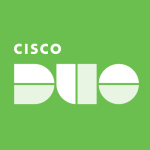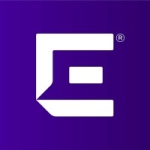What is our primary use case?
We have been authenticating our company's employees and certifying that they are in compliance. We have to certify our employees in regards to compliance, having all the necessary protections in our infrastructure for their endpoints, notebooks, laptops, and mobile phones.
We have implemented it across the entire company in every area and department at every single level of our organization.
So far, it has been on-premises. We are still working to expand it to integrate with multiple cloud providers, like AWS.
How has it helped my organization?
We have become more reliable because we do not have any vulnerabilities coming into our network, which is important since a lot of employees are using their own endpoints to connect to our infrastructure.
Every other time that we have a new employee, we need to make sure they have been using the latest version of the solution in order to connect to our infrastructure.
We have made our company more secure. As an IT guy, I have gained more importance to my company.
What is most valuable?
It is more about the features related to Apex. This is part of the solution where we can deep dive into each employees' usage according to our infrastructure needs.
There are a lot of integrations available with multiple vendors. This has made the solution easier to work with.
We use the management platform, which makes it easy for our IT to access and manage.
For how long have I used the solution?
We have been working with it for about 10 years.
What do I think about the stability of the solution?
If you have someone taking care of it, it can be quite easy to manage the solution. Otherwise, if you don't look after it and take care of it day-to-day, then it will become more complex to run. However, if you have someone taking care of it, maintenance is not that difficult.
What do I think about the scalability of the solution?
The scalability is good and quite easy to do. If you have the licenses, then anything is possible.
We worked with customers. The last one that we worked with had 10,000 licenses, i.e., 10,000 endpoints. We started working with the corporate office, then we replicate to the distribution centers.
How are customer service and support?
As an IT integrator, it is quite easy to work with their technical support. We have the correct people to deploy it as well as receive good support from the Cisco Technical Assistance Center. I would rate the support as 10 out of 10.
How would you rate customer service and support?
Which solution did I use previously and why did I switch?
We have been using ISE for a while. We didn't have another solution beforehand.
How was the initial setup?
We had to do some labs beforehand, in order not to breach the environment. The deployment was not too complex.
When we work with customers, it takes four or five hours. We start with a specific environment, then we replicate to other areas.
What about the implementation team?
We are a reseller. My professional services implemented it, which includes a tech lead, engineer, senior engineer, and project manager to work with the solution.
It is an easy solution to implement with the correct partner.
What was our ROI?
It is difficult to measure security breaches, but since we have not been attacked so far, it has paid for itself over the years.
Which other solutions did I evaluate?
We worked with Fortinet to look at their solution, but ISE was more reliable and had more integration with our product vendors. Also, it had a more affordable cost.
When compared with other vendors, like Forescout, for what we need, ISE has been more usable and accessible.
What other advice do I have?
Learn about the solution, then evaluate what devices it would be implemented with. I would amalgamate the devices and their versions with a systems integrator or partner who already has experience and will try only to replicate it, not to reinvent the wheel.
Part of our journey is getting everybody connected to the infrastructure and trying to avoid any breaches. We don't want to be vulnerable.
I would rate the solution as 10 out of 10.
Which deployment model are you using for this solution?
On-premises
Disclosure: My company has a business relationship with this vendor other than being a customer. Reseller.
















